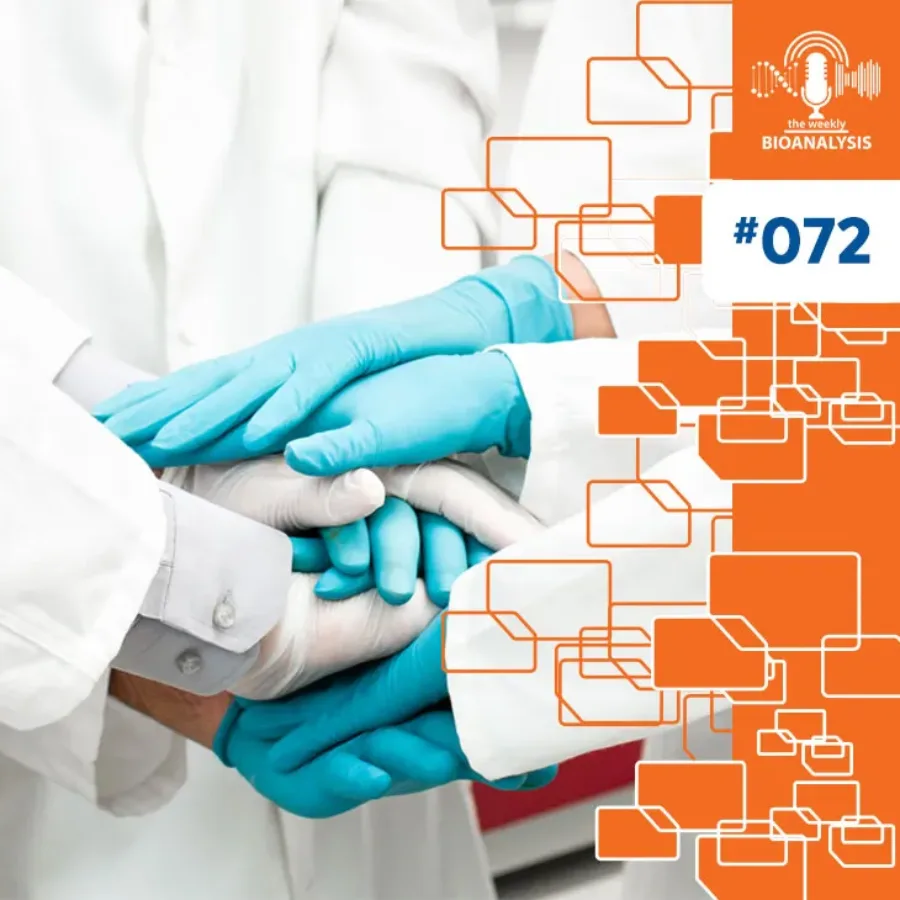 Blogs
Blogs
In the fast-paced and highly competitive landscape of contract research organizations (CROs) — where data serves as the cornerstone for all operations — robust data security practices are paramount. CROs play a pivotal role in the biopharma industry. They serve as trusted partners for conducting crucial studies and managing sensitive…
 Blogs
Blogs
Immunoassays are bioanalytical methods that generally use antibodies to detect and quantify specific analytes, often proteins, in biological samples. The process involves the capture of a target protein by an immobilized antibody, followed by its detection with another antibody conjugated either to enzymes, such as phosphatase alkaline or horseradish peroxidase…
 May 7
- May 11
May 7
- May 11
The American Society of Gene & Cell Therapy (ASGCT) annual meeting is the premier gathering for scientists, physicians, industry leaders, and patient advocates working at the forefront of gene and cell therapy. This year’s meeting, taking place in Baltimore, MD from May 7th to 11th, 2024, promises to be an…
 April 1
- April 4
April 1
- April 4
The World Vaccine Congress, taking place April 1-4 in Washington D.C., is shaping up to be a landmark event for the vaccine community. This four-day conference will bring together over 450 speakers and 250 exhibitors from across the globe to discuss the latest advancements in vaccine science, development, and manufacturing.
 March 5
- March 9
March 5
- March 9
The AD/PD™ 2024: Alzheimer’s & Parkinson’s Diseases Conference is set to take place in Lisbon, Portugal, from March 5th to 9th, 2024. This prestigious event, dubbed the “main event of the year in the field of neurodegenerative diseases,” promises to gather leading experts from around the world to share the…
 May 13
- May 16
May 13
- May 16
Mark your calendars, life science innovators! The AAPS National Biotechnology Conference (NBC) is gearing up for another groundbreaking year, and KCAS Bio is excited to be at the forefront of the action. From May 13th to 16th, 2024, San Francisco will transform into a hub of cutting-edge research, industry breakthroughs,…
 March 21
- March 21
March 21
- March 21
The Boston Society Gene & Cell Therapy Conference, renowned for its focus on translating groundbreaking scientific ideas into practical industrial applications, returns for another enriching gathering. This year’s event promises to be an invaluable platform for researchers, engineers, and industry leaders to connect, share knowledge, and shape the future of…
 March 10
- March 14
March 10
- March 14
The Society of Toxicology’s annual meeting is just around the corner, and it’s shaping up to be an event you won’t want to miss. This year’s meeting will be held in Salt Lake City, Utah, from March 10th to 14th, 2024, and it promises to be an exciting gathering of…
 February 29
- March 1
February 29
- March 1
Biomarkers 2024 is a three-day event that will bring together leading experts from the field of biomarker research to discuss the latest trends and tools in this rapidly evolving field. The event will feature over 90 cutting-edge presentations, 8+ hours of valuable networking sessions, and an exhibition hall showcasing the…
 Podcasts
Podcasts
For the 4th episode of “The Conversational Flow” podcast, Brian and Adam discuss spectral flow; something really near and dear to their hearts. This is a topic both of our hosts have been genuinely interested in since they really became aware of it, at which time they immediately…
 Blogs
Blogs
Immunogenicity refers to the ability of a substance, such as an antigen or a vaccine, to provoke an immune response in an organism. The recognition of the substance as foreign triggers an immune response, which involves the production of antibodies and the activation of immune cells to fight against or…
 Podcasts
Podcasts
For the final episode of “The Weekly Bioanalysis” in 2023, Dom and John invited KCAS’s scientific advisory team to join them, as we thought that as we are coming to the end of the year, it might be a good opportunity to introduce a few members of the…